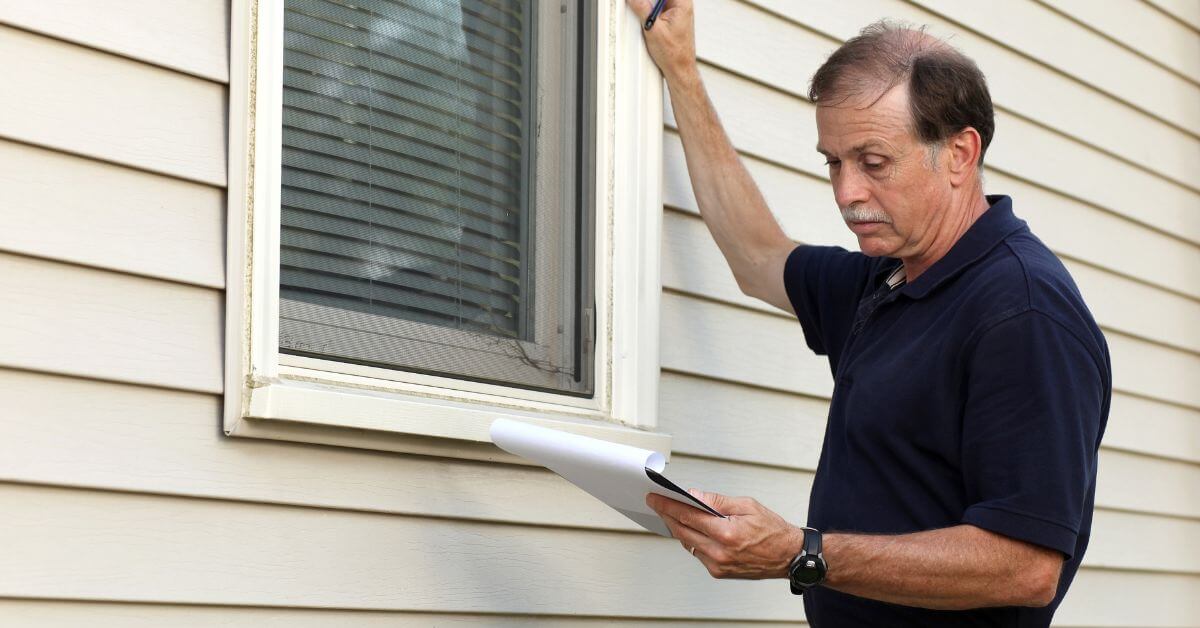The USDA loan application process is stressful and lengthy.
And the home inspection stage can be downright scary for many homeowners.
After all, if a significant issue is discovered within your property, it could spell the end of your homeowner’s dreams until the issue is fixed.
However, if you go into the inspection prepared and informed, it might be a pleasant and speedy experience.
This article will take you through everything you need to know about the inspection process and the requirements so you are ready to ace it when it comes.
What is a USDA Loan?
Before we dive into the specifics of USDA loan inspections, let’s first review what a USDA loan is and who is eligible for one.
A USDA loan is a mortgage loan that is guaranteed by the USDA and issued by private lenders. These loans are designed to help families with low to moderate incomes purchase homes in rural areas.
To be eligible for a USDA loan, you must meet specific income requirements, and the home you want to buy must be located in an eligible rural area.
There are two types of USDA loans available; direct and guaranteed.
- The Direct Loan is issued directly by the USDA and is intended for low-income borrowers who need help securing financing from other sources.
- The Guaranteed Loan is issued by private lenders but guaranteed by the USDA. This type of loan is available to borrowers with moderate incomes and offers more flexible credit requirements than traditional loans.
There are also the USDA Home Improvement Loans and Grants and the USDA construction loan.
The home improvement loan evaluates homeowners aged 62 and older for grants to improve the safety of their homes. In contrast, the construction loan is available to anyone who wants to build a new home in a rural or suburban area.
Why Do You Need an Inspection for a USDA Loan?

One of the requirements for obtaining a USDA loan is that the home must meet specific minimum property standards.
These standards are in place to ensure that the home is safe and sanitary for the occupants. The inspection process helps to identify any issues with the property that could pose health or safety risks.
During the inspection, an appraiser will assess the condition of the home’s structure, electrical systems, plumbing systems, HVAC systems, roofing, and more. The appraiser will also be able to give a fair valuation of the property.
Any issues found during the inspection must be addressed before the loan can be approved.
This is similar to the FHA loan inspection process. The only difference between that and the USDA is the scope; FHA inspections are more detailed.
What Does a USDA Loan Inspection Cover?
A USDA loan inspection covers many different aspects of the home’s condition. Some of the key areas that will be assessed during the inspection include:
- Structural integrity: The appraiser will check for any signs of damage or deterioration in the home’s foundation, walls, and roof.
- Electrical systems: The appraiser will ensure that all electrical systems are up to code and functioning properly.
- Plumbing systems: The appraiser will check for leaks or other issues with pipes and fixtures.
- HVAC systems: The appraiser will assess the condition of the heating and cooling systems.
- Roofing: The appraiser will check for any damage or leaks in the roof.
- Water supply: The appraiser will ensure that there is an adequate supply of safe drinking water.
It’s important to note that if any issues are found during the inspection, they must be addressed before the loan can be approved.
Understanding these requirements and how the USDA loan program works can help you prepare for a successful USDA loan inspection and do the necessary repairs beforehand.
How Strict Are USDA Loan Inspections?

The USDA inspection process is rigorous.
But that’s understandable since it is designed to ensure that the home meets certain minimum property standards that are in place to protect your health and safety.
During the inspection, an appraiser will thoroughly assess the condition of the home’s structure, electrical systems, plumbing systems, HVAC systems, roofing, and more.
Be prepared for this strict and comprehensive process, and have a budget ready for any repairs the appraiser might identify.
What Happens if Issues Are Found During the Inspection?
If issues are found during the inspection, they will need to be addressed before the loan can be approved.
Depending on the severity of the issues, you may need to make repairs or improvements before your loan application can proceed. Issues such as mold or structural damage may require extensive repairs before your application can proceed.
In some cases, it may be possible to negotiate with the seller to have them make repairs before closing on the sale.
It’s important to note that not all issues discovered during an inspection will necessarily disqualify you from getting a USDA loan.
How Can You Prepare for a USDA Loan Inspection?
Doing everything you can to prepare for an inspection is the key to a successful inspection and a speedy loan process. So don’t feel rushed to get your inspection done before your property is ready.
To ensure that your home passes its USDA loan inspection with flying colors, there are some steps you can take:
- Conduct your own pre-inspection: Before scheduling an official inspection, conduct your own walk-through of your home and note any potential issues that could come up during an official inspection.
- Make necessary repairs ahead of time: If there are any obvious yet minimal issues with your home, such as leaks or faulty electrical systems, take care of these repairs before scheduling an official inspection.
- Hire a reputable inspector: Choose an inspector who has experience working with USDA loans specifically so that they know what to look for.
- Be present during the inspection: Attend the inspection to ask questions and get clarification on any issues.
USDA Loan Appraisal Requirements

Albeit two separate processes, the loan inspection and appraisal process work hand-in-hand to determine the eligibility of your home choice.
The inspection ensures that the property meets USDA minimum property requirements for safety and livability, while the appraisal determines the property’s value.
The appraisal process evaluates the property’s value and condition, which helps determine how much the lender is willing to finance.
A USDA-approved appraiser will assess the property’s location, size, condition, and comparable sales in the area. They will also look for potential hazards or issues affecting the property’s value or safety.
Once completed, the appraiser will produce an appraisal report valid for 150 days but whose validity can be extended to 240 days using a one-time Appraisal Update Report. Note that the appraised value of the property must meet or exceed the purchase price of the home.
When Should You Get a USDA Loan Inspection?
Schedule your inspections as soon as possible after the purchase agreement is signed. This will allow ample time to address any issues during the inspection process.
There are no exceptions; inspections are required for all USDA loans, regardless of the property’s age or condition. So whether you’re purchasing a brand-new home or a used property, you’ll still need to schedule an inspection before your loan can be approved.
On the bright side, USDA loan inspections are generally not required for refinancing, as the property was inspected and appraised during the initial loan process. Still, some lenders may require an inspection to ensure that the property meets current safety and habitability standards before approving a refinance.
Frequently Asked Questions
What would disqualify you from a USDA loan?
While USDA loans are a great option for those looking to purchase a home in a rural area, there are certain factors that could disqualify you from being eligible for this type of loan.
Some common reasons for disqualification include having a credit score below 620, having a high debt-to-income ratio, or failing to meet the income requirements for your area.
Additionally, if the property you’re interested in purchasing does not meet USDA property standards or is located in an ineligible area, you may not be able to obtain a USDA loan.
Be sure to familiarize yourself with the loan process and requirements before applying for the USDA loan.
How to pass a USDA appraisal?
To pass a USDA appraisal, it’s important to ensure that your property meets all necessary standards and requirements.
This includes addressing any potential hazards or issues that could affect the property’s value or safety and ensuring that the appraised value of the property meets or exceeds the purchase price of the home.
What does a USDA underwriter look for?
A USDA underwriter looks for several key factors when reviewing a loan application, including your credit score, debt-to-income ratio, and income stability.
They will also review the property appraisal report to ensure it meets all necessary standards and requirements.
The underwriter’s goal is to assess the borrower’s ability to repay the loan and ensure that the property is a sound investment for the lender.
How do I prepare for a USDA loan?
To prepare for a USDA loan, ensure that you meet the income requirements for your area, have a credit score of at least 620, and have a manageable debt-to-income ratio.
You should also research eligible properties in rural areas and work with an experienced lender who can guide you through the application process.
Should You Be Afraid of a USDA Inspection?
No. Obtaining a USDA loan can be a great way to achieve homeownership if you’re on a tight budget or looking to buy in a rural area.
Sure, the USDA loan inspection process can seem daunting, but it’s essential to understand that these standards are in place to ensure you are getting a safe and secure home.
Being prepared and knowing what to expect can increase your chances of passing your USDA loan inspection without hassle.
And remember, we are here to help! We guide others to a treasure we can possess.
So, if you have any questions or need guidance on USDA loans, do call us. We’re happy to assist you in any way we can.






